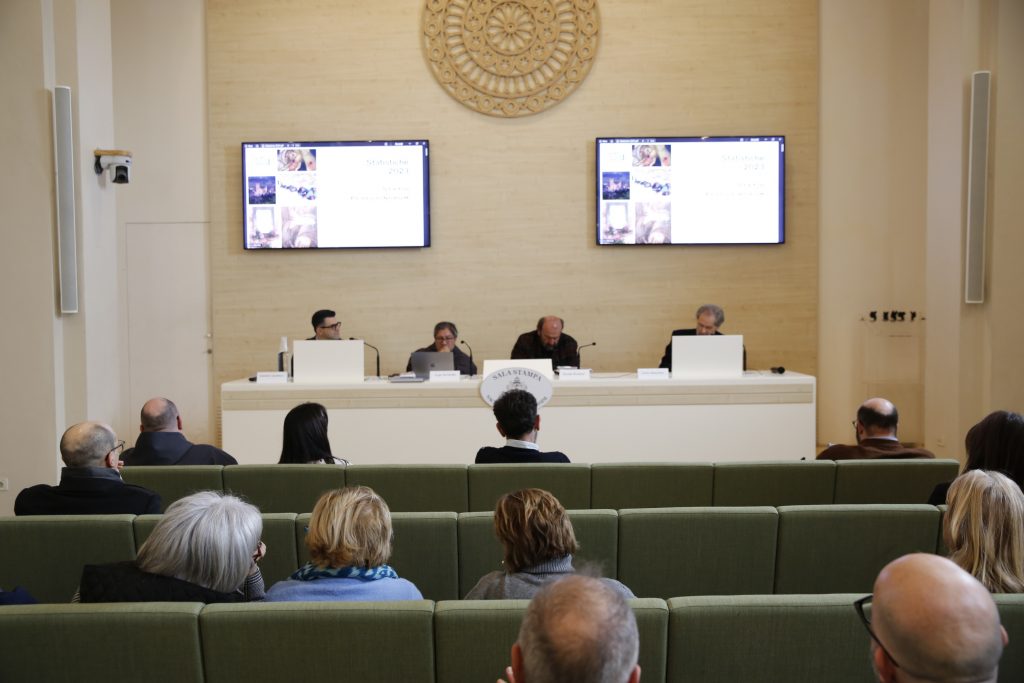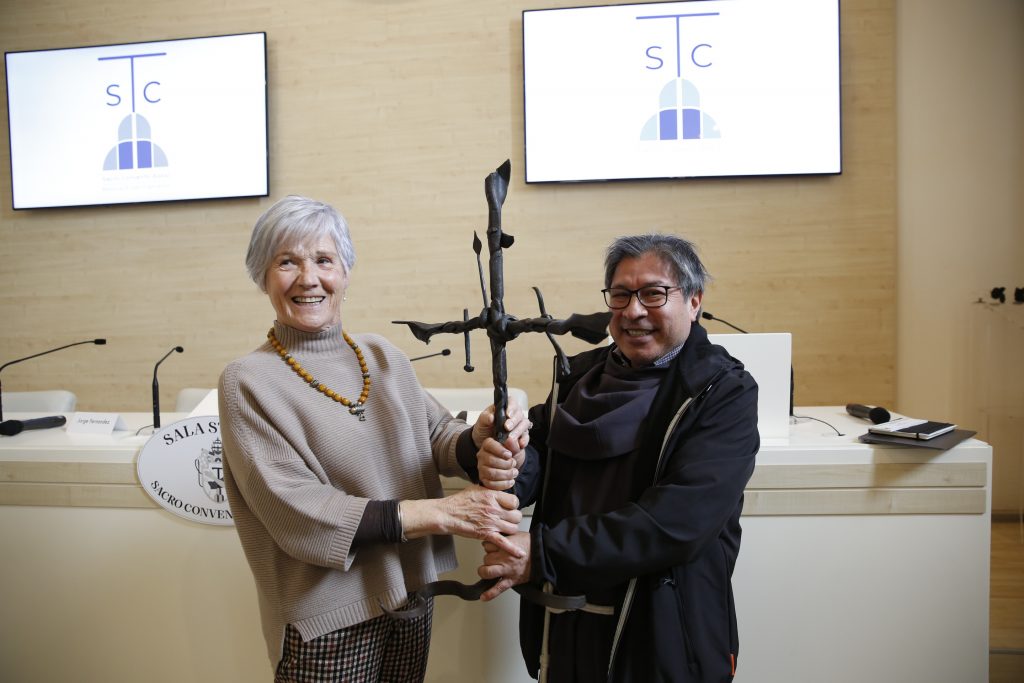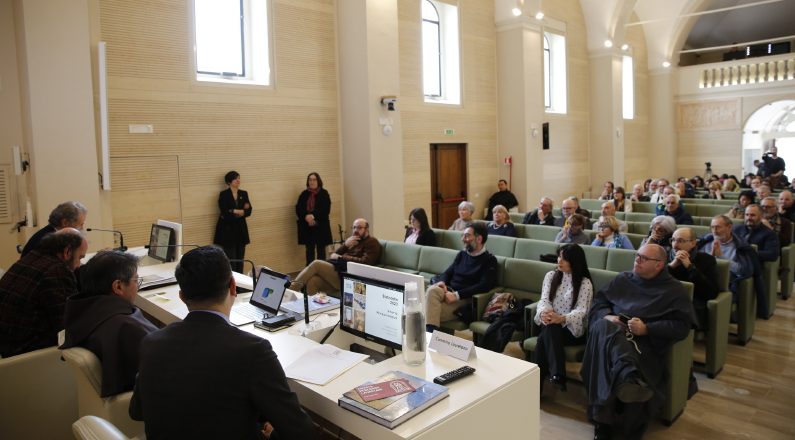(ZENIT News / Asís, 23.02.2024).- On Thursday morning, February 22, the statistics for 2023 were presented by the Statio Peregrinorum, service of the Basilica of Saint Francis that welcomes pilgrims, issues the Testimonium or pilgrimage certificate and classifies the data to elaborate the statistics on slow and sustainable tourism to Saint Francis’ tomb.
After the greetings of the Custodian of the Sacro Convento [Franciscan Friary], Friar Marco Maroni, OFM Conv., and of the Mayoress of Assisi, Stefania Proietti, there were talks by the poet Davide Rondoni, President of the National Committee for the celebrations of the eighth centenary of Saint Francis’ death; the Director of the Via Lauretana, Simone Longhi, and Carlo Menichini, President of the Laudato Si’ Hospital. Friar Jorge Fernández , OFM Conv, presented in detail the statistics on behalf of the Statio Peregrinorum.
In addition to the increase of the percentage of women as compared to men, the data speaks of an increase in group arrivals (34.2%, compared to individual arrivals (65.8%), which continue being the majority (in 2022 they were 24.8% and 75.2% respectively). The number of ways of moving remains virtually the same: 96.48% on foot, 3.13% by bicycle and 0.21% on horseback.

Provenance
The percentage of foreign pilgrims is growing: although the majority continues to be Italian (51% compared to 57% in 2022,) travellers from abroad are increasing, especially from Europe: 15.5% come from Germany, 5.2% from France and 3.66% from the United States.
Who Are They
Confirming that the Franciscan pilgrimage routes are for all age groups, there is a significant increase in the group older than 60 (59% compared to 35.3% in 2022), followed by the 30-60 year-old group (32.1% compared to 45.9% in 2022) and 6.3% of the 18-30 year-old group (14.15% in 2022). In regard to occupations, 21.29% of pilgrims are retired ; 8.62% are professors (6.45% in 2022) and 8.52% are students (12.76% in 2022).
Motivations
Interesting variations also concern the motivations that lead pilgrims to undertake a Franciscan pilgrimage: the religious motivation has grown significantly (46.73% compared to 32.2% in 2022) in detriment of other motivations (27.31% compared to 48.91% in 2022) For 2.83% the principal motivation is cultural.
The Ways
The Saint Francis Way is confirmed as the most travelled way by pilgrims with 81.4% (82.72% in 2022). It is followed by “Francis passed by here” with 5.2% and the “Assisi Way” with 5.12%.
Friar Marco Moroni, OFM Conv., Custodian of the Sacro Convento, said: “I believe that the growing number of pilgrims — that arrive on foot or by bicycle, primarily for religious motives, but not only, to the Basilica and to the crypt of Saint Francis of Assisi — responds to a profound and genuine need, to be in contact with nature, to enjoy a simple exchange and sharing with travel companions, and in giving up the comforts and advantages of traditional tourism. And it’s highly significant that it affects all age groups. Perhaps we need occasions like this, to pause to reflect on the meaning of these numbers, behind which there are people, stories, dreams and needs, so that we can better understand the world in which we live and help to welcome brothers and sisters as Saint Francis and the Church ask us.

Davide Rondoni announced a study he has undertaken as President of the National Committee to evaluate the possibility of creating a body to manage the different itineraries and ways. “If we don’t establish this Committee for the observation and upkeep of the Franciscan ways, we run the risk of losing the protection of the ways,” he stressed.
Before presenting the data, Brother Jorge Fernández called attention to the amendment to law 28, included in the 2024 Budget of the Region of Umbria, calling for a rethinking.
“An amendment has come out recently which allows the circulation of motor vehicles on the paths: we would not like these paths to become hunter beats and motor vehicles. We hope that a step back can be taken,” he said.
At the end of the act, the Association Cammini di Francesco del Casentino, in the person of the Secretary, Olga Fiorini, donated to the Statio Peregrinorum a wrought iron cross titled “Crucifixion” made by artist Fiorello Del Santo in 2005.
Thank you for reading our content. If you would like to receive ZENIT’s daily e-mail news, you can subscribe for free through this link.



